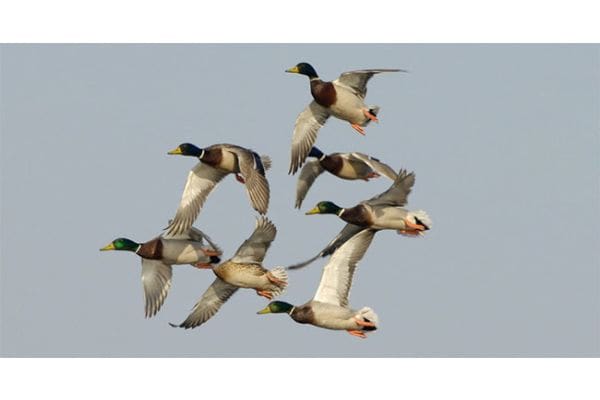Hunting and Fishing News & Blog Articles
North Dakota Waterfowl Survey Shows Wet Conditions, Increased Number of Breeding Ducks

BISMARCK, NORTH DAKOTA — What a difference a year can make. In 2021, North Dakota was abnormally dry. The annual May wetland index conducted by the North Dakota Fish and Game Department registered the fifth-driest year in the past 75 years. This year, the North Dakota spring water index shows conditions are the second-wettest in the history of the survey — up 616 percent from 2021.
Major snow events and prolonged soaking rains in this winter and spring — April had the second-most precipitation recorded in the past 128 years — have recharged parched wetlands throughout the state. The abundance of water across North Dakota is excellent news for breeding ducks, and in turn, for duck hunters.
“The really wet conditions will help in inciting nesting and continuing that effort throughout spring,” said Mike Szymanski, migratory game bird supervisor for the NDFGD. “Ponds that are important for brood-rearing habitat have rebounded nicely. Things are looking pretty good for duck production prospects.”
The survey showed 3.4 million total ducks, a 16 percent increase from 2021. Duck numbers for North Dakota are 38 percent above the long-term average. Mallards increased 58 percent, while pintails were up 108 percent and shovelers registered 126 percent higher than last year. Most species showed increases, although blue-winged teal were down 4 percent, wigeon were 10 percent lower and gadwalls declined by 36 percent.
“Waterfowl managers from North Dakota Fish and Game, the U.S. Fish and Wildlife Service and Canadian Wildlife Service have all observed that a lot of wetlands are devoid of ducks this spring,” said Dr. Chris Nicolai, waterfowl scientist for Delta Waterfowl. “That suggests that we have more water available this spring than ducks to fill them, which is not surprising given the poor production in the Prairie Pothole Region last year.”
Numbers of breeding Canada geese in North Dakota were the second highest ever recorded, although a late-April blizzard likely hurt nesting efforts. Geese nest earlier than ducks, so production might be lower as a result of the storm.
Duck production should be strong in North Dakota, and certainly improved in Manitoba and eastern Saskatchewan too, according to Dr. Frank Rohwer, president of Delta Waterfowl.
“I think we’re going to have an incredible production year,” he said. “We’re already seeing evidence of a strong nesting effort the eastern Dakotas. It should be a huge improvement coming out of last year’s drought. It certainly bodes well for a good duck season.”
The USFWS and CWS are completing and compiling data for the 2022 Waterfowl Breeding Population and Habitat Survey, which had been on hiatus for the past two years because of concerns about COVID-19. The results are expected to be released in August.
North Dakota is the leading state for duck production, so a strong breeding effort will feed ducks to all four flyways.
“It’ll be exciting to compare the North Dakota survey results to the broader federal survey this year,” Nicolai said. “There’s a very high potential for banner duck production, especially for prairie nesting ducks such as mallards, pintails, blue-winged teal, shovelers, gadwalls and redheads.”
Delta Waterfowl is The Duck Hunters Organization, a leading conservation group working to produce ducks and secure the future of waterfowl hunting in North America. Visit deltawaterfowl.org.
The post North Dakota Waterfowl Survey Shows Wet Conditions, Increased Number of Breeding Ducks appeared first on HuntingLife.com.
Copyright
© Hunting and Hunting Gear Reviews
